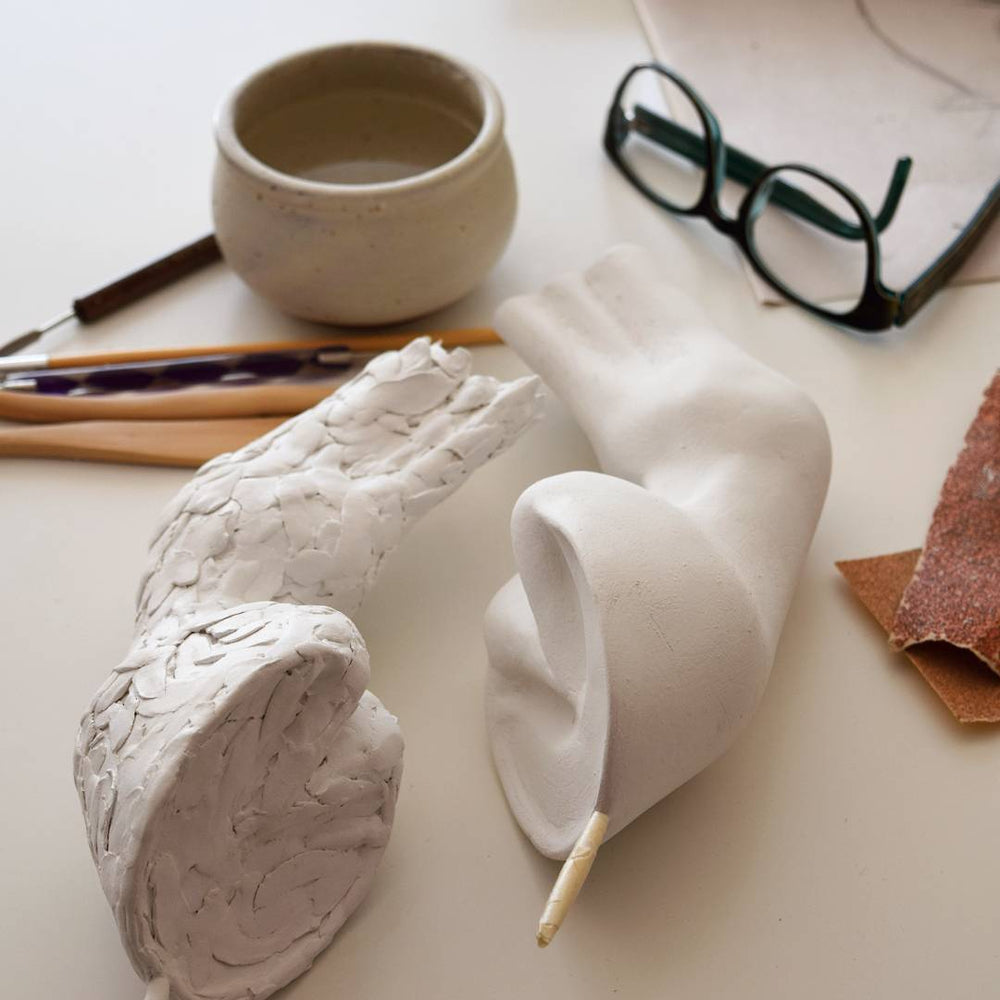
Air dry clay can be pricey, and you might not be able to use a complete package all in one creative session. Storing your clay effectively helps to cut down on waste and ensure you'll be able to use all of your hard-earned material.
I have two basic types of sculpting clays in my home art studio repertoire, and here is how I use/store them.
Storing Water-Based Air Dry Clay
Creative Paperclay (CPC), La Doll Premier, and even Crayola Air Dry Clay fall into this category of self hardening clay. They are water-based and will dry out when left out in the open air. Once dry, they cannot be re-hydrated and used any more.
Some dried air dry clays will disintegrated if left soaking in water for a long time, but I would warn against trying this method to "revive" your clay. You will never get back the plasticity, and your clay will likely lack structural integrity.
To preserve your opened, wet clay, the first thing is to limit its exposure to the air by doing the following:
- Open one side of the clay package, and only remove small, workable amounts of clay at a time.
- With the remaining clay in the original package, wrap it completely in cling wrap. You can add a few drops of water into the package before wrapping to give it some extra moisture for storage, especially if it will be some time before you use it next.
- Place the cling-wrapped package into a zip lock bag, get rid of the excess air inside the bag and seal it. Keep it out of the sun or hot areas.
If it is properly sealed, my CPC can last for weeks or even months this way.

How I store my Creative Paperclay for long term preservation. The elastic band helps to keep the clay package closed as well as keep the cling wrap in place. It's not sexy, but it works!
Storing 2-part Epoxy Clay
Apoxie Sculpt, Magic Sculpt, and Milliput are all epoxy clays that come in 2 separate containers. These clays never really dry out, though I find that if you store them for too long there can be some stiffening as the chemicals in the clay age.
The key to ensuring your epoxy clay doesn't harden into a useless mass, is to ensure that when you take each part out of its container before mixing, you do not contaminate the contents.
It is enough to use your fingers after touching part A and then going in with the same hand to get some part B clay. The resulting chemical reaction will form a hard cured crust on your clay, rendering that piece unusable, and possibly affecting the rest of the batch. I typically use 2 different tools, or a different hand for each part.
Not all air dry clays clays for sculpture will behave the same. The method detailed above should work for most clays, but remember that there are so many different types, that it's impossible to be absolutely definitive. Experiment with your clays to find what works best!
Storing your clay properly can end up saving you money and ensure that each time you sit down to work, there is one less thing to worry about!
What's Next?
Discover why you should prime your air dry clay sculptures
Made something? Find out how best to sign your sculpture

